Fort Reno is located about a half hour west of Oklahoma City just off Interstate 40. I have been driving past it off and on for about 30 years and always wanted to go see it but you know I was always busy and in a hurry. Superbowl Sunday I said what the heck I’m stopping. Son Logan was with me and he didn’t really care as long as it was not geocaching. He hates doing that.
So I checked it out. Fort Reno was established by the US Army in 1875 to help control the Native American’s in the area during the Indian Wars. The post was abandoned in 1907 but stayed in service for the Army as a Remount Facility for horse breeding until 1949. The Fort has a bunch of old buildings and I’ll be making several more posts of my visit there in the coming weeks.
Close by is the Fort Cemetery. I found this grave of Corporal Pat Lynch who died in the Battle of Turkey Springs in 1878. That battle was the last fight in then “Indian Territory” now Oklahoma between the US Cavalry and the Native Americans. Guess what, the Native Americans won. Check out the details here. Better than any movie is what I think. The Northern Cheyenne were trying to get back to their lands in Montana and fought the US Cavalry all through Oklahoma, Kansas, and Nebraska during their flight. It didn’t end well.
Fort Reno was a prisoner of war camp during World War II and the Fort Cemetery has many graves of German soldiers. Most of them died in other prison camps and were interred there and then reinterred at Fort Reno after the war. The man above is the most famous German POW buried at Fort Reno. He was held at another POW camp in Oklahoma, the Tonkawa Camp. While there he was accused by some hard core Nazi prisoners of being an informer and was beaten to death. The five who killed him were tried and convicted by the US Army for murder and then were executed by hanging at a makeshift gallows in an elevator shaft of a grain elevator at Fort Leavenworth Kansas. Their execution was delayed until the surrender of Germany to the Allies in order to avoid Germany from executing American prisoners in retribution. There are two books about this, “Extreme Justice” by Vince Green is a novel by Vince Green written in 1995 and “The Killing of Corporal Kunze” is a non-fiction book published in 1981 by Wilma Parnell. Both book are on Amazon for under a dollar plus three times that shipping.
And there were a few graves of Italian POW’s.
And I love serendipity. As Logan and I were leaving the cemetery I saw this old barn on the outskirts of the Fort and I so I drove up and took a picture of it. Later that night I posted it on a Facebook Group “Forgotten Oklahoma” as kind of an open ended post. Turns out that several people knew all about it. It was Mule Barn Number Three and was heavily damaged in the last tornado that came through the area in 2013. Further, the US Cavalry Association is raising money to restore the barn.
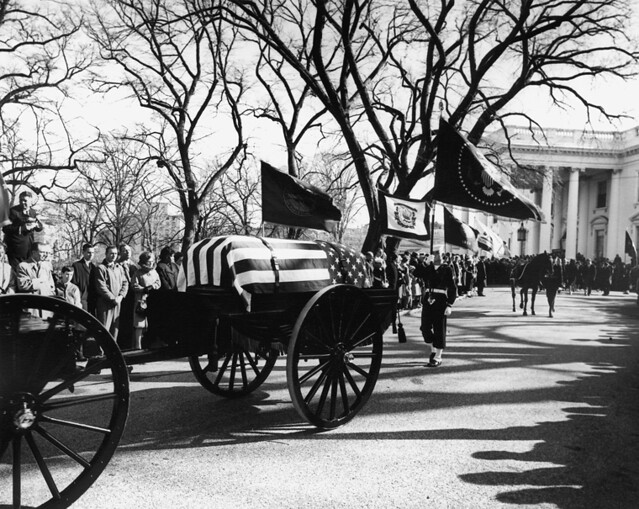
Courtesy of the US Embassy of New Delhi of all places on Flickr (click on photo for full license info). Trying to find third party photos to post without running afoul of copyright matters is a devil.
Fort Reno bred at least one famous horse. Black Jack, the riderless horse in John F. Kennedy’s funeral procession was foaled at Fort Reno. Black Jack did that funeral gig and those of Franklin Roosevelt, Herbert Hoover, Douglas MacArthur, Dwight D. Eisenhower, and Lyndon B. Johnson and thousands of other funerals during his 24 year career. He was laid to rest with full military honors in 1976 and is buried on the parade ground of Fort Myers.
The next little tidbit of information that I am trying to verify is that the sire of the famous Depression era racehorse Seabiscuit spent time at Fort Reno. The horse’s name is Hard Tack. The US Cavalry Association headquartered at the Fort has a photograph of him at the base. I am still trying to find out more about that.
Anyways, what I thought was just an old barn turned out to be quite historic. I love that kind of stuff.
I’m linking with Our World Tuesday

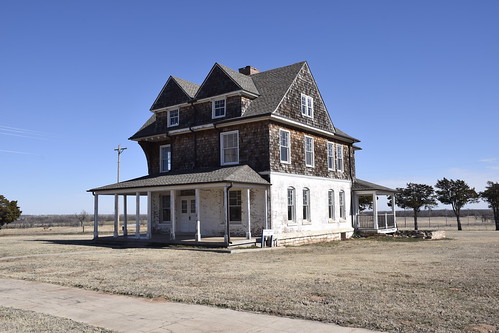
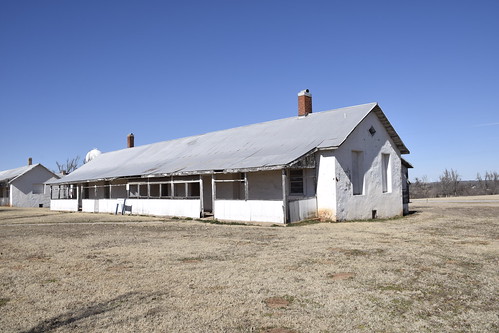
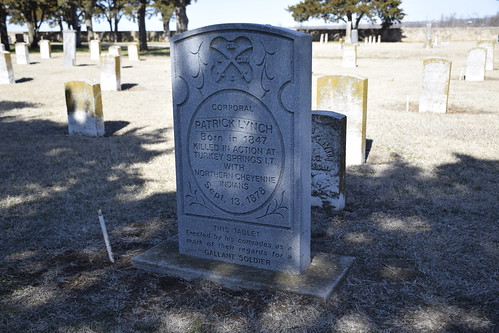

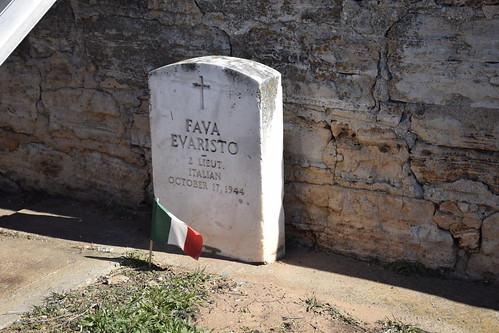
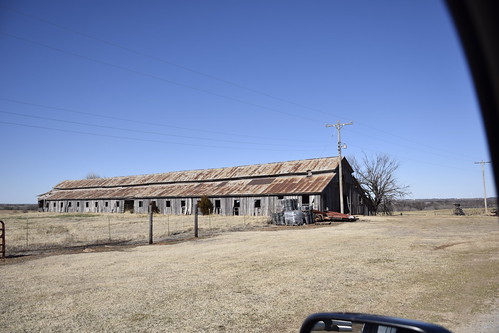
Look in the Visitor’s Center and there is verification of Seabiscuit ‘s granddaddy being at the fort. 🙂
I will be there one of these days!! Thanks for your help.
Love it. Just love it. Great post.
Alan,
This is indeed a special place. Lets your imagination go free, doesn’t it. That cemetery and the POW graves adds another dimension. The chapel, the museum, the memories and ghosts. The prairie wind speaks.
did you know that the first telephone line in the Territory went from there to Ft. Sill?
Thanks so much for this, I must go back this spring.
Terry
Oh, Alan, this is awesome!! And a great piece of history!! Thank you so much for following it up and sharing it with us today!! Well, actually this is still Sunday night, but you know what I mean!! Terrific!! I hope you have a great new week!!
Super-interesting history! I like the old POW graveyard, and really pleased to hear they are trying to restore the mule barn!!
I love history like that and the old grave stones. I wonder if the Jockey Club’s registry might have more information on Sea Biscuit’s breeding. Great pictures!
Interesting history of that Fort. And the barn — that ‘Forgotten Oklahoma’ on FB is very interesting. Boy this new fangled internet thing is really a wonderful way to find stuff out!
Fascinating post and beautiful photography ~ intrigued me about the history of the horse and also Seabiscuit ~ thanks ^_^
Wishing you a Happy Week ^_^
Fascinating post Alan, historical places are always interesting. Lovely shots.
Thank you for this wonderful virtual tour of Fort Reno!
More mysteries. Yet one at least solved. I may be a nature gal but do love to stop at points of history.
Fascinating and also very beautiful!
Lots of history there and I am also amazed that you found the historic photo of all places ‘at the’ US Embassy in New Delhi. I have seen a lot of Native American artifacts around Roswell, Georgia, not too far from our former home there. There is always something interesting close to home, isn’t there?
Have a Beautiful Day!
Peace 🙂
I try and be good about pictures that are not mine to make sure that I have the right to do so. So, yes thankful to the Embassy at New Delhi.
a very interesting design on the house in the top image. Would love to explore it 🙂